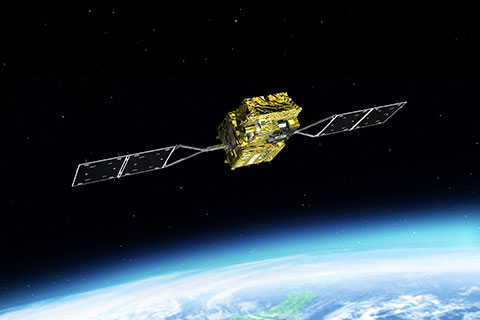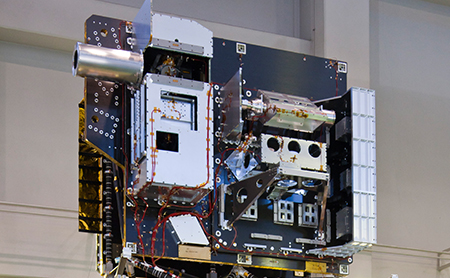About Global Change Observation Mission - Climate "SHIKISAI" (GCOM-C)
 |
Forecasting future global climateThe purpose of the GCOM (Global Change Observation Mission) project is the global, long-term observation of Earth's environment. GCOM is expected to play an important role in monitoring both global water circulation and climate change, and examining the health of Earth from space. Global and long-term observations (10-15 years) by GCOM will contribute to an understanding of water circulation mechanisms and climate change. GCOM consists of two satellite series, the GCOM-W and GCOM-C. The GCOM-C, carrying a SGLI (Second generation GLobal Imager), conducts surface and atmospheric measurements related to the carbon cycle and radiation budget, such as clouds, aerosols, ocean color, vegetation, and snow and ice. |
|---|
Project Topics
indexMassive bushfires in Australia seen from Space
|
Australia has naturally faced many droughts and bushfires, but conditions have been unusually severe this time. Sometime around September 2019, the bushfires continuously occurred around the state of New South Wales in southeast Australia. The fires had been spreading on a larger scale, and a number of massive fires had merged into a "Mega Fire" that was out of control. The fires are unlikely to end entirely even at the end of January 2020. Figure 1 (left) Standardized Precipitation In... |
Press Release
index-
- Aug. 3, 2018 (18:00) [release]
- Shikisai Data Stream Exploratory Measures Initiated for JAFIC
-
- Dec. 24, 2017 (01:20) [release]
- Completion of Critical Operations Phase, SHIKISAI and TSUBAME
Characteristics of Global Change Observation Mission - Climate "SHIKISAI" (GCOM-C)
SGLI is an optical sensor for monitoring the long-term trends of aerosol-cloud interactions and for understanding the carbon cycle
|
The Second generation GLobal Imager (SGLI) on GCOM-C1 is an optical sensor capable of multi-channel observation at wavelengths from near-UV to thermal infrared wavelengths (380nm to 12µm.) SGLI also has polarimetry and forward / backward observation functions at red and near infrared wavelengths. SGLI obtains global observation data once every 2 or 3 days, with resolutions of 250m to 1km. The SGLI observations will improve our understanding of climate change mechanisms through long-term monitoring of aerosols and clouds, as well as vegetation and temperatures, in the land and ocean regions. These observations will also contribute to enhancing the prediction accuracy of future environmental changes by improving sub-processes in numerical climate models. SGLI-derived phytoplankton and aerosol distributions are also used for mapping fisheries and for monitoring the transport of yellow dust and/or wildfire smoke. |
 |
|---|
Major Characteristics
| Launch Vehicle | H-IIA Launch Vehicle |
|---|---|
| Location | Tanegashima Space Center |
| Weight | 2000kg |
| Power | 4kw |
| Design Life | 5 years |
| Orbiter | Sun-Synchronous Subrecurrent/ Recurrent |
| Altitude | 798km |
| Inclination | 98.6 degrees |
| Period | 10:30±15min |
| Launch Date | December 23, 2017 |
Contents

- Aug. 6, 2008
- To Preserve Our Earth